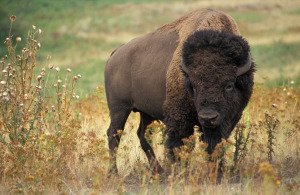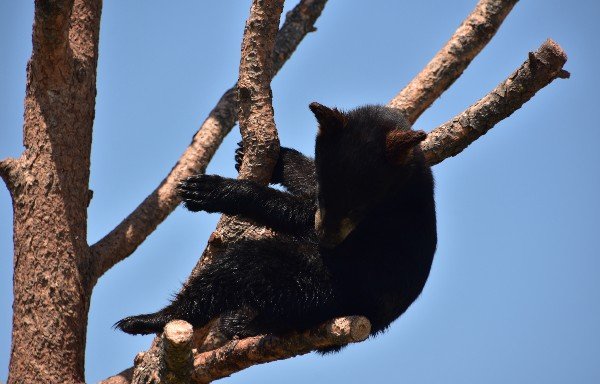Here at Bear World, you’ll find a variety of Yellowstone wildlife. Probably one of the most notable (beside the bears of course) is the American bison—or as many people know them, buffalo. Bison are the hulking herd animals of Yellowstone, roaming in groups across the grasslands. Bulls grow up to be around six feet tall and twelve feet long while cows are five feet tall and eight feet long. With dimensions like that, these bison can weigh up to 2,000 pounds—that’s more than an original Volkswagen beetle.
Horns
Bison horns could be carved or ground up to make arrowheads, cooking and eating utensils, decoration, and even medicine.
Hair & Hide
Hair was used to stuff pillows and sleeping pads, or it could be braided into rope. The uses of hide were almost unlimited. They made everything from clothing and moccasins to drums and saddles.
Bones
Bones were particularly useful for making tools and weapons. Native Americans crafted arrowheads, splints, shovels, and war clubs from bison bone.
Organs
While using animal hair or bone doesn’t seem too far out of your comfort zone, most of us wouldn’t think about keeping parts like the gall bladder or stomach. However, many of the bison’s organs proved to be perfect carrying containers. They often used the stomach lining to hold water while the bladder could carry medicine.
Fat
Like other animal fat, bison fat could be made into tallow, soap, and lubricant.
Muscles &Tendons
The string-like nature of muscles and tendons made for great thread. They used them to tie arrowheads, string bows, or sew clothing.
Extras
It seems like this list covers pretty much everything, but Native Americans used the bison for even more. The blood was used as paint for ceremonies and decoration, which they painted on with the tail. Manure chips were collected for fuel. Even the scrotum had its use: a ceremonial rattle.
You would be hard pressed to find another animal quite as useful as the American bison. That’s one of the many reasons why preserving their species is so important. From the millions that used to wander North America, the bison were decimated down to a few thousand. Luckily, with sanctuaries and national parks, the herd is making a comeback—up to an estimated 340,000. With future growth on the horizon, we won’t be saying goodbye to this beautiful—and useful—animal anytime soon. To watch American bison, along with other wildlife, roam their natural habitat visit Yellowstone Bear World today.






